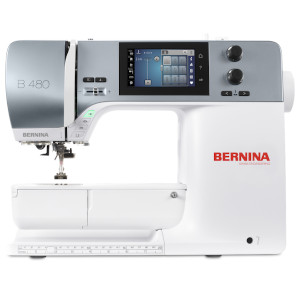Buttons present a fashionable act when it comes to enhancing the overall look of apparel. They are available in different shapes and sizes. A lot of different varieties are manufactured, keeping in view the color and its usage.
Types and Applications of Buttons
 Buttons serve many purposes apart from being fashionable and just for show. They can be categorized as follows:
Buttons serve many purposes apart from being fashionable and just for show. They can be categorized as follows:
Flattened Buttons
These are manufactured on a large scale. Flat buttons are generally plastic or metallic in the material. They have either two or four holes that are required while sewing through a fabric. They are used in men’s shirts.
Holes Beneath The Button
These buttons have tunnels beneath the surface. These holes allow the thread to pass through the button while sewing. No holes are present on top of it. They are used in jackets and other similar heavy and thick fabrics.
Jeans Buttons
You have noticed the material of buttons used in jeans. These are also called stud buttons. They are suppressed on to the fabric. Decorative images or brand logos can be carved in them. These buttons are a great source of branding.
Wooden Buttons
These are wooden based buttons and have two holes in between. These buttons are of cylindrical shapes. The two holes in the middle permit sewing in overcoats and jackets and give an authentic look at handicraft items.
Decorative Buttons
They do not have any predefined shapes. They are available in different sizes and forms. Fancy buttons are used for decorative purposes, which uplifts the look of the fabric.
Types Of Buttonholes
The button is strengthened and stitched in the fabric by sewing it together. They are fastened by forming holes; these are termed as buttonholes. The holes in which the buttons are inserted are small openings in the fabric. They are stitched on all sides so that the material does not ooze out threads. It makes the fastening of the buttons easier and gives a complete look to the garment.
The basic buttonholes that are used in most projects are:
 Squared
Squared
This is the most basic type of buttonhole. Here, the edges are sewed in a squared manner. The most straightforward sewing machines can also stitch this type.
Rounded At One Side
Here, the edges are rounded. They are used on average weighted fabrics, which are not too heavy.
Rounded At Both Sides
In delicate fabrics such as silks, the buttonholes are rounded at both the edges.
Keyhole
When thick or fat buttons are used, the buttonholes are in the shape of keyholes. It helps in the insertion of the switch with ease.
Sewing Procedure Of A Buttonhole
 Buttonholes can be both hand-sewn as well as machine sewed. Different types of devices are capable of different types of buttonholes. Two commonly used types of procedures are:
Buttonholes can be both hand-sewn as well as machine sewed. Different types of devices are capable of different types of buttonholes. Two commonly used types of procedures are:
Multiple Step Procedure
In this, all the four sides of the buttonhole are sewed. Twice for the lengths and twice for the breadths. Simple mechanism sewing machines are equipped with this procedure.
Single-Step Procedure
Here, the machine itself measures the size of the buttonhole according to the size of the button to be used. There is no requirement of sewing every four sides separately. In a single step, the whole procedure is done. This procedure is possible in technologically advanced sewing machines.
Materials Required For Sewing A Buttonhole
- The machine to be used for sewing
- Spare fabric for trial
- Actual fabric to sew
- Marking pen or chalk
- Ruler or Scale
- Required number of buttons of desired shape and size
- Thread for sewing
- Scissors
- Bobby pins
- Needle
Step-by-Step Procedure Of Sewing A Buttonhole With A Sewing Machine
Phase I
- Step 1: Place the spare fabric for sewing as a trial in the sewing platform. You can also use a stabilizer beneath the material.
- Step 2: With the help of a marker pen or chalk, mark the position of the buttonhole. You may also use a ruler so that a straight line is formed.
- Step 3: Place the button in the buttonhole foot so that the sensor can examine the size of the hole.
- Step 4: Affix it to the machine and pull it down.
- Step 5: Place the fabric accordingly that the needle meets at the conjunction of the pointed lines
- Step 6: Adjust and straighten the fabric accordingly until the needle pierces through it.
- Step 7: Begin sewing with the pedal or the Start and Stop button.
- Step 8: In the single-step procedure machines, the buttonhole gets sewed on all four sides.
- Step 9: For more buttonholes, lift the fabric and place the next spot.
- Step 10: Repeat the process.
 Phase II
Phase II
Once the buttonhole is sewed, withdraw the fabric. Cut the ends of the thread. After the completion of sewing, the middle portion of the buttonhole needs to be cut. Slit the material in between the buttonhole with a scissor. While doing so, do not forget to pin up the ends with bobby pins. These will restrict from cutting more than required.
After the fabric is cut open, try to insert the button. Ensure that the button can slide through easily. If any modification is needed, you may go ahead with either reducing or increasing the buttonhole’s space. It is always advisable that before sewing a buttonhole on the main fabric, try it a few times on a trial fabric of the same material. It will help to get it right on the original one without any error. Mistakes on the unique structure might mar the overall look of the garment.
How To Sew A Buttonhole With A Sewing Machine: Final Thoughts
Sewing a buttonhole might look a bit difficult while doing for the first time, but with practice, it is one of the most natural sewing techniques. Remember to keep the sewing machine well maintained with regular cleaning and oiling. With proper procedure and knowledge, button and buttonholes can give the entire outfit or other decor materials an eye-catching look.


